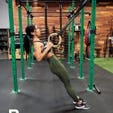The best way to improve your upper body to handle heavy loads is to train it for proper alignment and stability. You want to be able to handle heavy loads in the most efficient way possible. The more efficiently you can carry a heavy load, the heavier you will be able to carry, and you will be able to manage the weight for longer periods of time.
The best exercise to achieve these goals is a handstand. It trains grip strength, isometric upper body strength, and proper alignment and stability for carrying heavy loads with the least effort possible.
That said, if you train your Handstand in a “banana back” position, then you are training bad alignment; when you go to carry a heavy load it could result in injury. The muscle memory developed from your training will transfer to the other tasks you are trying to do, so when you’re doing your training it’s very important to focus on proper technique.
The best advice I got from my coach Xing Xing in Melbourne, Australia, was, “anything you want to learn on your hands, learn it first on your feet.” So, try standing up nice and tall on your feet and close your eyes.
Try out different variations: feet wide, feet together, feet hip width apart, pelvis tucked, pelvis sticking out, neutral pelvis, weight more on the toes, more on the heels, or evenly distributed.
Just be an observer to see what seems the most stable. Now, try the position that you found to be the most stable and move your upper body to add more instability; this might make you change what you thought was the most stable.
Just like doing a “banana back” handstand might be doable, once you want to add more weight, change shapes, or go to one arm, it might not be the most efficient.
Anytime I teach one arm handstands I always teach how to achieve the shape standing on their feet before they flip it upside down. If you think about it, you can’t get more weight on your upper body to train strength than in a handstand.
That said, not everybody is strong enough to start with all of their weight. Here is a program with progressions that can be used to build your muscular endurance, stability, active shoulder flexibility, and isometric strength.
How to Improve Upper Body Workouts with Handstand Progressions
Your goal with your endurance practice is to continue as long as you can with the intention of perfect form. As you get tired your form with fall apart, but as long as you’re pushing towards the correct position your practice will pay off. You are allowed to fail only if your muscles give out, but don’t quit!
When working on endurance, you can use one of four different positions (in order of difficulty, easiest to hardest): face down on the floor, stomach against the wall, spotted free handstand, or unspotted free handstand. You can also do the endurance progressions in front support, on elbows, or 1⁄2 handstand with feet elevated, so get creative!
Regardless of your level, it’s worth training in each of these positions. Whichever level you decide to start with, if you fail during your set then fall back to an easier position. For example, if you start your set with a handstand against the wall and you fail, finish the set with your stomach on the floor. Make sure when you move to an easier position that you always maintain the intention of perfect form.
Upper Body Workout Using Handstand Progression
During the endurance exercise, you’re working your way up to holding a 5 minute handstand. Start with 7 sets that total 5 minutes and work up to the entire 5 minutes in just 1 set.
After each set, rest for the same amount of time as the set you just completed. For example, doing 7 sets you will hold for 60 seconds, rest 60 seconds, hold 60, rest 60, hold 45, rest 45, hold 45, rest 45, hold 30, rest 30, hold 30, rest 30, hold 30.
Progressions to 5 minutes:
A1: 7 rounds: 60/60/45/45/30/30/30
A2: 6 rounds: 90/60/45/45/30/30
A3: 5 rounds: 90/60/60/45/45
A4: 4 rounds: 90/90/60/60
A5: 3 rounds: 120/90/90
A6: 3 rounds: 120/120/60
A7: 3 rounds: 150/120/30
A8: 2 rounds: 150/150
A9: 2 rounds: 180/120
A10: 2 rounds: 210/90
A11: 2 rounds: 240/60
A12: 2 rounds: 270/30
A13: 1 round : 300
Improve Upper Body Workout with Improved Grip Strength
Another variation that will increase your grip strength and set you up for the proper hand placement is using handstand blocks. These can be used in any of the variations that you are on your hands, for example: front support, 1⁄2 handstand, stomach against the wall, free handstand spotted, or free handstand not spotted.
Also, just by working on moving from the floor to the blocks you will increase more strength while moving and challenge your alignment and stability.
1: Improve Upper Body Workouts with 5/5/5 Exercise
This exercise is used to work on proper alignment when moving while not having to worry about balancing. The same basic movement is performed in three different shapes. With all three shapes, the first two steps are always the same: spiral your arms so that you have direct contact with your earlobes to your shoulders and close your ribs pulling them through your body towards the floor.
2: Use the Tuck Exercise to Improve Your Upper Body Workout
Pull your legs up towards your chest. Once your legs make it to 90-degrees, you need to close your ribs even more so that you are moving your legs as a result of closing your ribs and not the other way around. Pull your heels to your bum so that you are creating as much of a squish as you can. The more you squish, the easier it will be to hold the position when you are on your hands.
3: Straddle Exercise for Your Upper Body Workouts
The intention of the straddle is to keep your feet touching the floor at all times. Unless you are a world class contortionist, your feet will lift off the ground. That’s ok, as long as you are still intentionally trying to make them touch the floor. As with the tuck drill, as soon as you reach 90-degrees, the rest of the movement should happen as a result of closing your ribs more.
4: Improve Your Upper Body Workouts with The Pike
The intention of the pike is to get your feet as close to your head as you can, and to lengthen your tailbone in the opposite direction. As with the two previous exercises, when you reach 90-degrees, the rest of the movement happens from closing your ribs more and trying to create as much of a squish as your current flexibility level will allow.
Using Handstand Exercises to Improve Upper Body Workouts
Putting these exercises into practice while carrying or lifting heavy loads may take some mental focus at first until the technical and physical understanding of the technique is understood and muscle memory is developed. If I can leave you with two things to think about when putting these into practical use, they would be:
1. Stay Stacked
Think about stacking your bones as much as possible. The better alignment you have, the more you will be able to lift and carry. Try carrying overhead sometime and do the reverse handstand position.
2. Stay Close
The second is to keep the load as close to your body as possible. Just like with the squish in the 5/5/5, the closer you keep the weight that you are trying to manipulate, the easier it will be to get it from point A to point B.
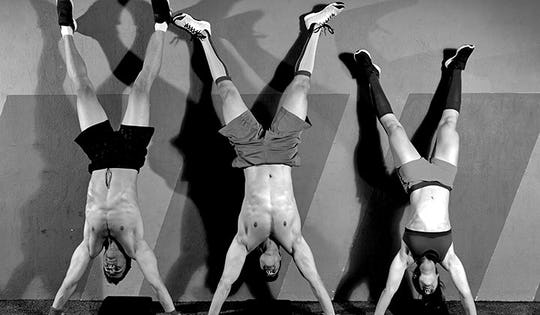

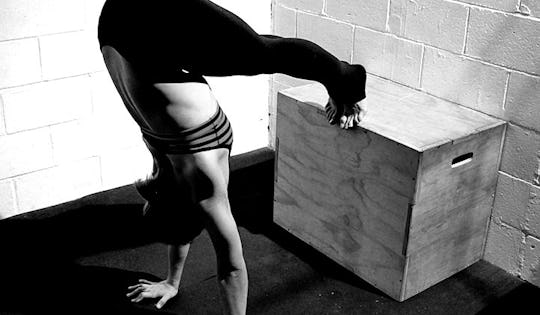
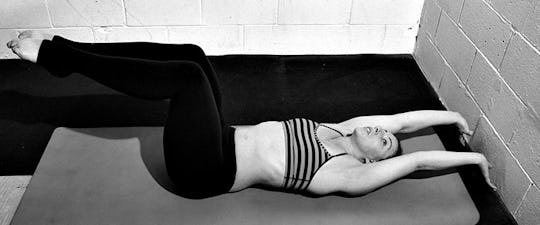
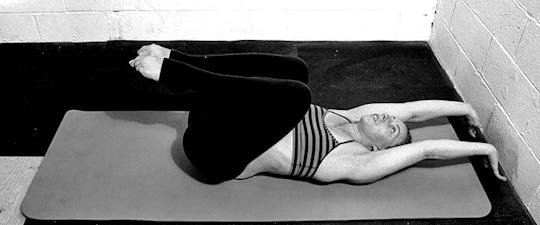
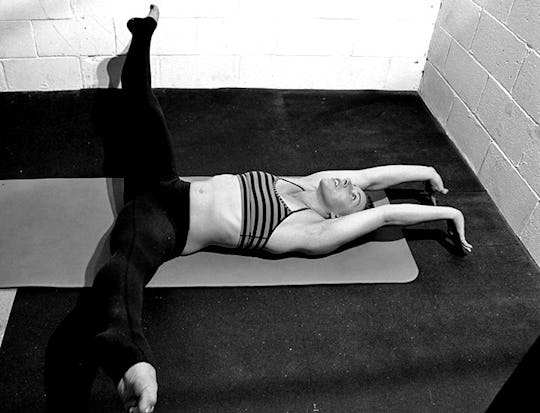
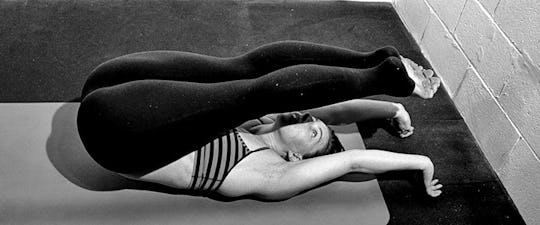
)


